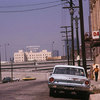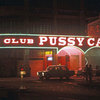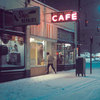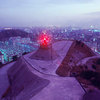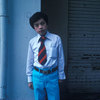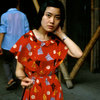Greg Girard: In the Near Distance 1973-86
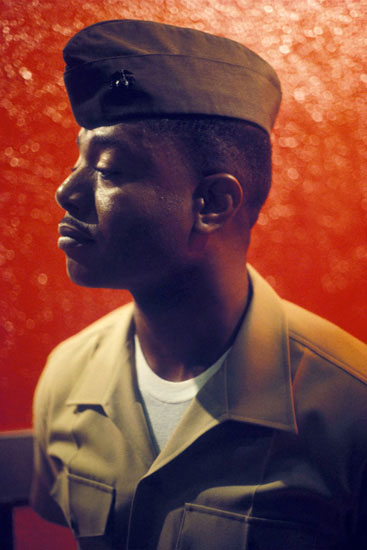
During and after High School I photographed in Vancouver in the area near the waterfront, staying in cheap hotels on weekends. Afterwards, I worked for a year, saved money and then took a Philippine freighter (as a passenger) to Hong Kong in the Summer of 1974. I was 18 years old, and it was 18 days across the Pacific. (more)
I travelled around South East Asia for 8 months and returned to Canada from Hong Kong, just as South Vietnam was collapsing. I was fascinated by the imminent end of something I didn’t really even understand, but it registered that something was over in a big way and on a different scale than anything I’d known. I watched the final collapse on television back home.
The following year, 1976, I visited Tokyo for the first time and immediately knew it was a place where I wanted to spend some time. I fell into a job teaching English at a disreputable school, found a tiny one-room apartment, and suddenly was living in Tokyo, trying to take photographs there.
Any place you live overseas when you’re 20 years old is going to be amazing, but it was fantastic to wander and explore the city; it was really before the place was being written about or looked at in ways that popularized the place in the 1980s. It was overwhelming and fantastically exciting. I was totally broke but didn’t notice.
There was a small darkroom rental place a couple stations from where I lived and I used to develop and print pictures there. I also started looking at exhibitions by Japanese photographers and going to museum shows at department stores in Tokyo.
I saw movies, walked around taking pictures, and read. Peter Handke, Jorge Luis Borges, Franz Kafka, Paul Bowles (and the Morroccan writers he translated).
I don’t even remember how I first came across Handke. “The Left-Handed Woman” was the first story of his I read. I still have the paperback copy (“Two Novels by Peter Handke”), and I just started re-reading parts of it. I was taken directly to that place where his observations of the physical world, when you read them, are somehow turned into feelings. And his descriptions of behavior, often the merest of gestures, perhaps reveal more about “how things are” - in the world, or between a couple - than any description of the feelings of the people in his pages might.
I’m not sure where his reputation is today but, if I recall correctly, he used to have a reputation as someone whose work dealt with alienation. But I always found him to be a kind of shaman or seer, able to register the world with an almost dangerous clarity, and with an empathy towards the innocents. In his hierarchy men (males) seem to occupy the lowest rung, with women and children on a higher plane. I find his work beautiful and sad - as if being disappointed with the world, and often tender, and not at all alienating, even when he describes alienation.
Returning to Vancouver from Japan in 1977 I started university and then dropped out and worked as a taxi driver and again saved to return to Japan, which I did in 1979, after travelling across the US in the summer of 1978.
In Tokyo, I taught English again from 1979-1980. I was happy to be photographing and walking the streets there, improving my Japanese, and getting to know the city in a way I didn’t achieve on first visit.
The pattern continued, I returned to Vancouver, drove taxi, and photographed with new intensity this time in Vancouver at night. I lived in the Lotus Hotel near Chinatown. $42 a week. During this period I met artist Roy Arden and his friends. It was wonderful to be around people who took their work seriously, some seriously cool smart artists - that nice art mix of insider and outsider.
This was all new to me, but I guess I had some street cred from having spent time living in Japan and travelling and photographing in Asia. We showed each other work and talked and drank late into the night, we listened to great music and went to clubs like good young bohemians anywhere.
In the Fall of 1982, I travelled to Tokyo and Hong Kong. This time I never returned. Fell into a job working for the BBC in Hong Kong as a sound recordist for BBC TV News. Travelled the region covering coups and natural disasters and Royal Visits. This was my education on how to work as a journalist, arriving somewhere you’ve never been and producing a story or, later, for me: a set of pictures.
I left the BBC after 4 years and started working as a photographer for news magazines, based in Hong Kong and travelling in the region. It was during this time, between assignments, that I started working on the Walled City project. But I was also photographing Hong Kong simply because it was the place where I was living; and there wasn’t any “story” about that. City of Darkness was published in 1993. I spent a couple of years in New York (1992-94), but was hardly ever there, working mostly in Asia on assignment at that time.
In 1998 I moved to Shanghai. It was hard to leave Hong Kong, but the changes taking place in China was something I wanted to look at more closely, instead of merely visiting on short trips (I first visited China in 1983, working with the BBC). I started photographing Shanghai without knowing what I was doing exactly, in between assignments, and that became the book Phantom Shanghai.
I still live in Shanghai.
Greg Girard’s In the Near Distance 1973-86 is going to be published by Kominek Gallery in late Spring 2010. - Jörg Colberg
 By
By 

